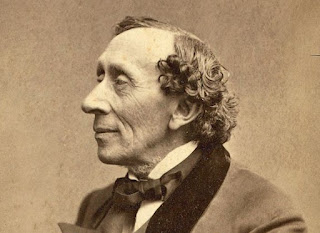Steve Jobs said, “I didn’t invent anything. I looked and saw what was there that no one else could see.” As I work in schools, I have noticed that the difference between elite 21st century educational curricula and run of the mill 21st Century educational curricula is not STEM, but STEAM - Science, Technology, Engineering, Art, and Mathematics. In order to be a creator and innovator, in order to use the tools of problem solving, in order to gather and evaluate evidence to make sense of information and make decisions, one must think like an artist, not just analytically, but also synectically, creatively joining disparate pieces of information to discover what is there that no one else can see.
 |
| A Glenfield Middle School student at work in the STEAM lab. |
At Glenfield School in Montclair, NJ, I am collaborating with Delia Malloy-Furer, the STEAM teacher to incorporate storytelling into her 6th, 7th, and 8th grade classes. Stories of UFO’s, the Jersey Devil, and Buried Treasure, became the trigger for discussions of astrophysics, ecology, evolution, and geology. An updated performance version of Edgar Allan Poe’s short story, “The Facts in the Case of M. Valdemar,” triggered a lesson on biology and brain activity. Drawing, performing and writing follow ups, reinforced the academic information and led to further discussions of philosophy and ethics as the students considered the difference between, truth, legend, and propaganda, as well as the legal and moral definitions of life and death.
I am also collaborating with Ms. Malloy-Furer on a project in the seventy-eight seat Sky Scan Planetarium that is housed in the school. Based on my book Imagine the Moon, the show’s script combines a storytelling performance of myth, music, astroscience, and history, with astronomical displays and digital art as well as rod and shadow puppets designed by Terry Burnett.
The role of the teaching artist is often misunderstood. Too often it is characterized as entertainment. We are asked to perform at an assembly, create a performance, give the students an experience, and “Oh yes, you can visit a classroom,” but the real reason to have artists working with teachers is to inspire both student and teacher to look further than the test, consider more than the right answers. Artists inspire, as in the Latin “to breathe.” When an artist works in a school, learning becomes a common breath, a communal connection that has a physical and psychological reality. We become as one and draw upon and appreciate the depth of humanity’s multiple intelligences. Recently, while working with a STEAM concept, in a special-needs classroom, the students wrote this poem that expresses their feeling about coming to school to work with a teaching artist.
Frozen in time, Stuck in traffic,
Creeping to school along the same week-day path,
Emerging from the vehicle as if it were a cocoon
Woven from a caterpillar,
We, ready to change, with
Fluttering wings of chaotic laughter,
Make greetings of good morning
As we drag our feet.
Hundreds of stairs rise up.
Our wings once curled are ready to open.
With a slow steady pace we march
Down the hall and into our room,
Where our wings, now dry, emerge
To show our bright colors.
One could not ask for a better recommendation to have teaching artist in the schools.










